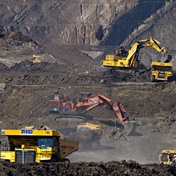
The amount of stock a company holds on its balance sheet at reporting time can give investors an indication of a company’s cash flow status, as well as flag other issues on the horizon.
Management of inventories – the stock a business holds to sell in future – is a crucial art for most businesses. The exception being pure tech businesses that don’t sell hardware and financial services companies that generally have cash and use capital adequacy ratios as a sort of inventory measure.
But traditional retailers, manufacturers and miners will have inventory on hand. In these days of global supply chains and just-in-time inventory holdings, it can be a competitive edge if they manage their inventory effectively.
Tim Cook’s rise at Apple under SteveJobs was in part due to his mastery of supply chains, producing tens of millions of iPhones in China from multiple parts suppliers scattered across Europe and Asia and then ensuring that each iPhone was at the right store when a customer walked into buy that model.
Now, the Apple supply chain is one of the most complex in the world; while ensuring baked beans are on the shelves at your local retailer is a vastly different and far simpler matter. But management of inventory remains especially important, even if seemingly simple, and large retailers invest vast large sums into technology to get it exactly right.
As is generally the case when investing, we can use a company’s annual report to compare inventory levels to previous years, as well as against peers in the industry. The first point I’d like to highlight is stock turnover. If inventory is R1 000and annual revenue is R12 000, then the company turns all its inventory every month. But if the same revenue has inventory levels of R3 000, then the stock turns every four months and is briefly four times less efficient.
Now, there could be several reasons for this. Maybe there are exceedingly long lead times on production. But when a company has a longer turnover period, this always leads me to wonder why. Even if production is lengthy, good management will have a just-in-time production schedule, ensuring lower inventory levels and faster turnover rates.
Now sure, if it is canned beans, becoming outdated is less of an issue. But if it is this year’s must-have Christmas gift for kids, tech gadget or summer fashion item, it could be worth far less as time goes by. We see this in fashion retailers all the time, with end-of-season sales in a bid to clear stock at almost any price.
The other risk is not having sufficient stock, running inventory levels too tightly and ending up with bare shelves and lost sales. So, it is important to check a company’s inventory level in previous years and the levels of their peers. Reducing inventory levels could be an early warning of cash flow issues that are preventing a build-up in inventories.
Inversely, inventories suddenly increasing could be an early warning of a dud product that is not selling and will need to be marked down, or a case of a company losing customers to a competitor. So, while boring in many senses, keeping an eye on inventories can give an early warning of problems approaching down the road.
One last oddity is mining companies that generally have inventories. This relates to metals mined but not yet sold. This served the platinum miners very well in 2015 when the long strike was partly offset by selling down inventories. However, in an ideal mining world, mining inventories should just be about commodities that have been mined and are en route to the market rather than the miner stockpiling– either in the hope of improved future prices, or to weather a strike that may halt mining activity.




 Publications
Publications
 Partners
Partners













